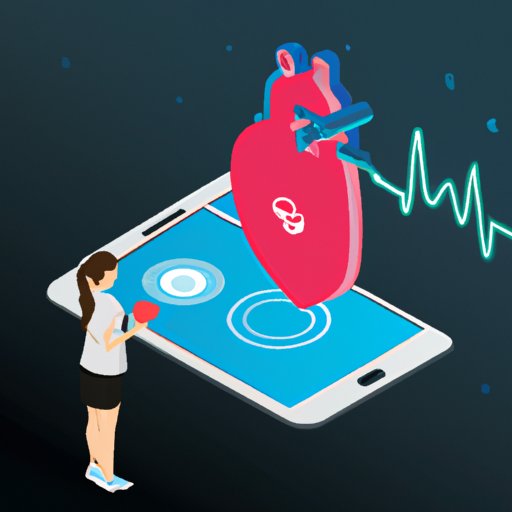Introduction
Smart technology has become an integral part of modern healthcare, revolutionizing the way healthcare is delivered and improving patient outcomes. Smart technology refers to a variety of digital technologies that are used to collect and analyze data to improve healthcare services. It encompasses a wide range of devices, systems, and software that can be used to monitor and manage health information. By leveraging smart technology, healthcare providers can better understand their patients’ needs and deliver more efficient and effective care.

Using Smart Technology to Improve Patient Outcomes
The use of smart technology in healthcare allows for better patient care, improved outcomes, and increased efficiency. Smart technology can be used to help diagnose and treat medical conditions, as well as to monitor patient progress and provide feedback. For example, wearable devices such as fitness trackers can be used to track physical activity levels, heart rate, and other vital signs. This data can then be used to identify potential health issues and make adjustments to treatment plans accordingly.
Smart technology can also be used to improve communication between healthcare providers and patients. For example, telemedicine can be used to allow patients to consult with their doctor remotely. Additionally, some healthcare providers are using virtual reality to help patients with chronic pain manage their symptoms. By leveraging smart technology, healthcare providers can provide more personalized and proactive care.

The Role of Smart Technology in Transforming Healthcare Delivery
Smart technology is playing an important role in transforming healthcare delivery processes. It can be used to automate administrative tasks, streamline processes, and improve the accuracy of patient records. Additionally, smart technology can be used to identify trends and anomalies in patient data, which can help healthcare providers make more informed decisions about care. For example, predictive analytics can be used to identify patients who may be at risk for certain medical conditions.
Smart technology can also be used to improve the security and privacy of patient data. By leveraging advanced encryption techniques, healthcare providers can ensure that sensitive patient information is kept safe from unauthorized access. Additionally, smart technology can be used to detect and prevent cyberattacks, helping to protect patient data from malicious actors.

Smart Technology: Revolutionizing Healthcare Practices
Smart technology is revolutionizing healthcare practices by providing new ways of delivering care. For example, artificial intelligence (AI) can be used to automate routine tasks such as scheduling appointments, ordering tests, and managing patient records. Additionally, AI can be used to analyze patient data and identify trends or patterns that could indicate a health issue. This can help healthcare providers make more informed decisions about diagnosis and treatment.
Smart technology is also being used to develop innovative treatments for medical conditions. For example, machine learning algorithms can be used to identify potential targets for drug development, helping to speed up the process of finding new treatments. Additionally, robotics and 3D printing are being used to create customized prosthetics and implants that can be tailored to the individual’s needs.
Improving Access to Quality Care with Smart Technology
Smart technology is also helping to improve access to quality care by making it easier for patients to connect with healthcare providers. For example, telemedicine can be used to allow patients to consult with their doctor remotely. Additionally, some healthcare providers are using virtual reality to provide remote therapy sessions, allowing patients to receive treatment without having to travel to a clinic.
Smart technology can also be used to provide patients with access to their own health data. For example, some healthcare providers are using mobile apps to allow patients to view their medical records, track their vital signs, or even schedule appointments. By giving patients access to their own data, they can become more involved in their care and better understand their health.
Conclusion
Smart technology is revolutionizing the healthcare industry, providing new ways of delivering care and improving patient outcomes. By leveraging smart technology, healthcare providers can better understand their patients’ needs and provide more personalized and proactive care. Additionally, smart technology is making it easier for patients to access quality care and empowering them to take control of their own health.
The use of smart technology in healthcare is continuing to grow, and its potential applications are far-reaching. As the technology continues to evolve, we can expect to see even more advances in healthcare delivery and improved patient outcomes. Smart technology is truly revolutionizing the way we deliver and receive healthcare.
(Note: Is this article not meeting your expectations? Do you have knowledge or insights to share? Unlock new opportunities and expand your reach by joining our authors team. Click Registration to join us and share your expertise with our readers.)
